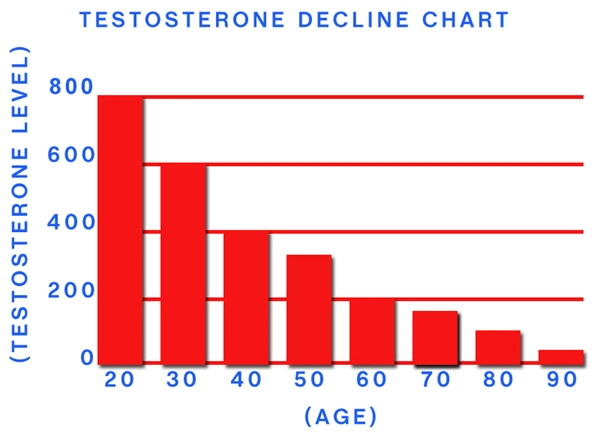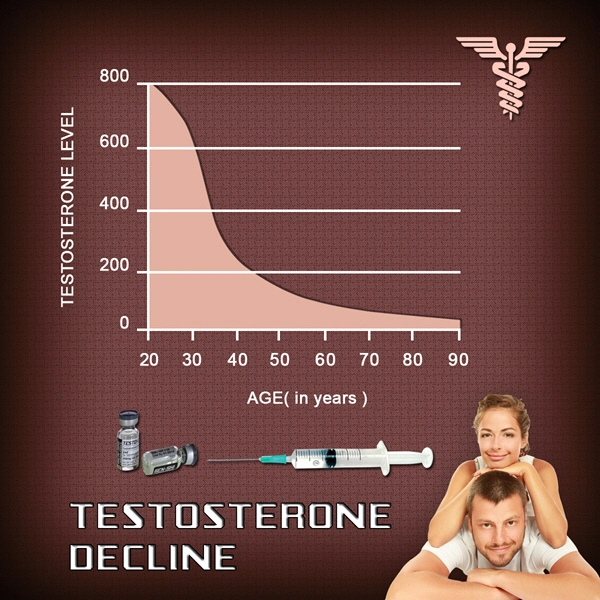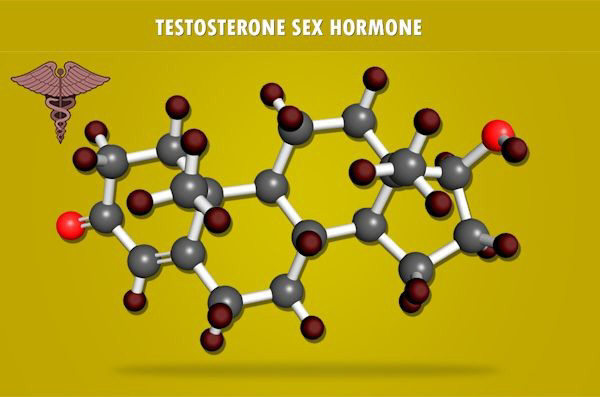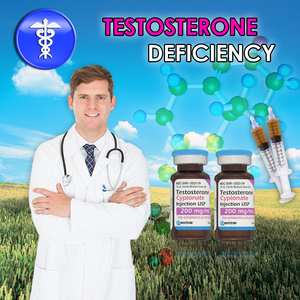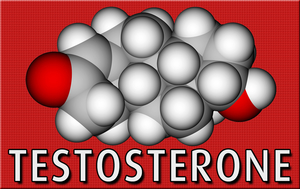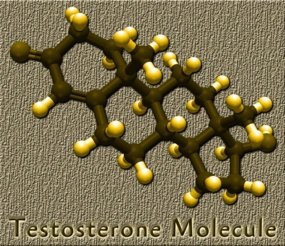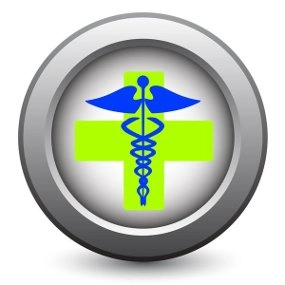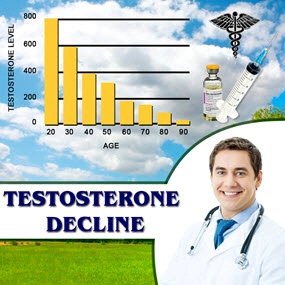Video Link: https://vimeo.com/293541501
Video Download: Click Here To Download Video
Video Stream: Click Here To Stream Video
What is Testosterone?
Testosterone is one of the many chemical messengers known as Hormones, and it is essential for the usual health and function of both men and women. However, the hormone is primarily associated with male wellness and development.
Testosterone belongs to a specific class of hormones known as steroids. Most people think of steroids as hormones or chemicals that boost anabolic, muscle-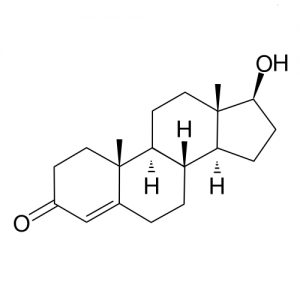 building performance. Still, a steroid represents a molecule with a specific structure that is most commonly used to deliver messages and exert physiological changes in the body.
building performance. Still, a steroid represents a molecule with a specific structure that is most commonly used to deliver messages and exert physiological changes in the body.
Three common steroids are cholesterol, testosterone, and estrogen. In fact, the human body builds both Testosterone and Estrogen from a core of cholesterol, which is one reason why cholesterol is such an essential part of daily nutritional intake.
Testosterone and Prenatal Development
Testosterone is responsible for the development of primary male sex characteristics while the child is still in the womb. In the normal developmental cycle, Testosterone begins to affect the male fetus around seven weeks after conception. It encourages the formation of Leydig Cells, which are responsible for the production of Testosterone.
After the fetus develops its own ability to produce Testosterone, the internal male sexual organs begin to grow, and at around eight weeks, external sexual organs begin to develop fully.
Testosterone and Puberty
After primary sex characteristics are established, the influence of Testosterone diminishes almost completely until puberty, where Testosterone triggers the development of secondary sex characteristics.
Testosterone also triggers muscle development and growth. Human Growth Hormone is also responsible for growth, and the combination of Testosterone and Human Growth Hormone during puberty is why men grow taller than women.
When puberty begins, the hypothalamus starts to release the ultimate precursor hormone of Testosterone: Gonadotropin-Releasing Hormone, or GnRH. GnRH travels from the hypothalamus to the pituitary gland where the production of Follicle-Stimulating Hormone and Luteinizing Hormone begin, which are responsible for the production of sperm and testosterone, respectively.
Testosterone Levels in the bloodstream are mediated by a negative feedback loop. As serum Testosterone Levels increase, a small amount of Testosterone is converted into Estrogen, primarily by body fat, which then circulates to the hypothalamus and suppresses the production of Testosterone precursors.
Anabolic Actions of Testosterone
Testosterone is a hormone that encourages growth and development. During puberty, the male physiologically changes significantly. He begins to put on muscle mass, and this triggers a reduction in body fat. Testosterone amplifies the growth spurt induced by Human Growth Hormone, and also eventually leads to the closure of the epiphysial plates, which concludes the growth spurt.
The vocal cords get thicker, and the larynx grows, which leads to the deepening of the voice associated with male puberty. Finally, Testosterone encourages the full development and functionality of the male sex organs, and the testicles start to produce sperm.
The Influence of Testosterone During Adulthood
Beyond puberty, Testosterone Levels normalize, and no longer have a significant impact on the structure of the male body, except when Testosterone Levels become deficient.
Testosterone ultimately becomes an agent of homeostasis, helping the male body retain its health and potency. Testosterone contributes heavily to the ability to form an erection and produce sperm, and it also sustains muscle mass and body fat distribution. Testosterone also appears to have protective effects upon many systems in the body.
For example, there is convincing evidence that men that don't produce enough Testosterone are more likely to suffer from depression, anxiety, and even cognitive decline and Alzheimer's disease.
How Is Testosterone Found in the Body?
Natural Testosterone exists in the bloodstream in three different forms. Some Testosterone circulates through the body without being attached to any other molecule—This Testosterone is referred to as Unbound Testosterone.
Testosterone is also found flowing through the bloodstream attached to Sex hormone-binding Globulin, which stores Testosterone and cannot be used by the body while bound. A third form of Testosterone in the bloodstream is attached to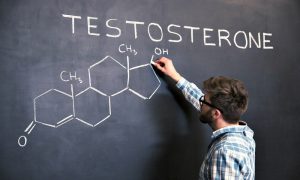 Albumin. Unlike with SHBG, Albumin has a weak binding with Testosterone, and this Testosterone can still be made available to the body.
Albumin. Unlike with SHBG, Albumin has a weak binding with Testosterone, and this Testosterone can still be made available to the body.
Most circulating Testosterone is attached to SHBG, meaning that most Testosterone in the bloodstream cannot be actively used by the body. If a person produces too much SHBG, this reduces the effectiveness of Testosterone released by the Leydig Cells and contributes to Testosterone Deficiency.
There are many factors that can lead to increased SHBG, including overactive thyroid, abnormally high estrogen levels, and natural aging.
Testosterone that travels through the bloodstream can be used by the body to make other vital hormones. For example, 5-alpha reductase is an enzyme that converts Testosterone into Dihydrotestosterone, also known as DHT.
Elevated DHT levels are associated with an enlarged prostate because DHT stimulates the reproduction of prostate cells. Testosterone also encourages the production of Estrogen via adipose fat tissue, and elevated Estrogen levels are the primary mechanism by which Testosterone production is controlled via the hypothalamus.
How Do Testosterone Levels Change as a Function of Age?
Testosterone Levels are vitally crucial to male (and to a lesser extent, female) homeostasis. Testosterone Production remains steady through the late teens and the twenties and starts to enter a steady decline starting at age thirty. This decline actually begins around thirty for both sexes.
Testosterone Secretion slows gradually, at a rate of about one percent annually. After many years, however, this decline can begin to produce symptoms associated with hormone imbalance, such as weight gain, fatigue, loss of muscle mass, depression, anxiety, cognitive decline, loss of bone mineral density, erectile dysfunction, and loss of libido.
Age-related Testosterone Decline is often referred to as Andropause because it manifests around the same age as Menopause in many men.
On the other hand, Testosterone is a slow drop in Testosterone Production, and 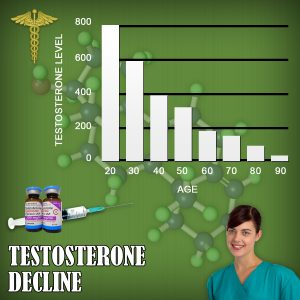 Testosterone Production does not cease wholly and suddenly, as is the case with Estrogen and Menopause. Testosterone Deficiency can inhibit fertility when severe, but most men retain some fertility even in the case of significant deficiency.
Testosterone Production does not cease wholly and suddenly, as is the case with Estrogen and Menopause. Testosterone Deficiency can inhibit fertility when severe, but most men retain some fertility even in the case of significant deficiency.
For men with Testosterone Deficiency, Testosterone Therapy with Testosterone Injections, Testosterone Patches, or Testosterone Creams can help restore Hormonal Homeostasis and counteract many of the symptoms of abnormally low Testosterone Levels.
Contact Us Today For A Free Consultation

- Adverse Effects of Testosterone Therapy in Adult Men: A Systematic Review and Meta-Analysis [Last Updated On: July 2nd, 2024] [Originally Added On: June 4th, 2010]
- Low Testosterone Levels, Foods That Increase Testosterone Levels wwwSelf-Improvement-Bible.com [Last Updated On: November 12th, 2023] [Originally Added On: May 30th, 2011]
- Low Testosterone in Men: The Next Big Thing in Medicine! - Abraham Morgentaler, MD [Last Updated On: May 7th, 2023] [Originally Added On: June 3rd, 2011]
- How To Determine Testosterone Levels By Looking At Your Ring Finger [Last Updated On: December 7th, 2017] [Originally Added On: June 30th, 2011]
- Prolab Horny Goat Weed Testosterone Booster Supplement Review [Last Updated On: November 23rd, 2023] [Originally Added On: July 19th, 2011]
- The Healthy Skeptic: Products make testosterone claims [Last Updated On: August 13th, 2024] [Originally Added On: September 11th, 2011]
- How To Naturally Increase Testosterone [Last Updated On: November 21st, 2023] [Originally Added On: September 28th, 2011]
- Testosterone Production - Video [Last Updated On: November 25th, 2024] [Originally Added On: November 20th, 2011]
- Testosterone makes us less cooperative and more egocentric, study finds [Last Updated On: January 23rd, 2018] [Originally Added On: February 1st, 2012]
- Testosterone makes us less cooperative and more egocentric [Last Updated On: January 24th, 2018] [Originally Added On: February 1st, 2012]
- Too much testosterone makes for bad decisions, tests show [Last Updated On: May 4th, 2015] [Originally Added On: February 1st, 2012]
- Today in Research: Testosterone's Negative Effects; Diet Soda Death [Last Updated On: January 2nd, 2018] [Originally Added On: February 2nd, 2012]
- Testosterone drives ego, trips cooperation [Last Updated On: December 2nd, 2017] [Originally Added On: February 4th, 2012]
- FDA approves BioSante/Teva's testosterone gel [Last Updated On: May 4th, 2015] [Originally Added On: February 15th, 2012]
- 'Manly' Fingers Make For Strong Jawline in Young Boys [Last Updated On: December 1st, 2017] [Originally Added On: February 15th, 2012]
- Teva, BioSante Win U.S. Approval for Testosterone Therapy [Last Updated On: December 10th, 2017] [Originally Added On: February 15th, 2012]
- BioSante Gains on Approval of Testosterone Gel: Chicago Mover [Last Updated On: January 8th, 2018] [Originally Added On: February 16th, 2012]
- BioSante soars following drug approval from FDA [Last Updated On: December 26th, 2017] [Originally Added On: February 16th, 2012]
- Antibodies, Not Hard Bodies: The Real Reason Women Drool Over Brad Pitt [Last Updated On: December 24th, 2017] [Originally Added On: February 21st, 2012]
- Almark Publishing Releases Book From Mark Rosenberg, M.D. Revealing Natural Discoveries Associated With Low ... [Last Updated On: May 4th, 2015] [Originally Added On: February 28th, 2012]
- Testosterone Replacement Clinic Comes to Kansas City with Potential to Help Thousands of Men [Last Updated On: May 4th, 2015] [Originally Added On: March 1st, 2012]
- Study examines the relative roles of testosterone and its metabolite, dihydrotestosterone in men [Last Updated On: December 2nd, 2017] [Originally Added On: March 7th, 2012]
- The Role of 5{alpha}-Reductase Inhibition in Men Receiving Testosterone Replacement Therapy [Editorial] [Last Updated On: December 21st, 2017] [Originally Added On: March 7th, 2012]
- Effect of Testosterone Supplementation With and Without a Dual 5{alpha}-Reductase Inhibitor on Fat-Free Mass in Men ... [Last Updated On: January 3rd, 2018] [Originally Added On: March 7th, 2012]
- Why We Like Men Who Can Keep Their Cool [Last Updated On: December 30th, 2017] [Originally Added On: March 7th, 2012]
- Testosterone And Heart Health [Last Updated On: May 4th, 2015] [Originally Added On: March 10th, 2012]
- Your Life on Testosterone: Overly Sure of Yourself, Unwilling to Listen [Last Updated On: November 25th, 2018] [Originally Added On: March 15th, 2012]
- Mayo Clinic-TGen study role testosterone may play in triple negative breast cancer [Last Updated On: December 8th, 2017] [Originally Added On: March 23rd, 2012]
- A dose of testosterone might not cure what ails you [Last Updated On: January 23rd, 2018] [Originally Added On: March 25th, 2012]
- Green tea could aid athletes hide testosterone doping [Last Updated On: December 16th, 2017] [Originally Added On: March 25th, 2012]
- TGen Study Role Testosterone May Play in Triple Negative Breast Cancer [Last Updated On: December 6th, 2017] [Originally Added On: March 26th, 2012]
- Testosterone low, but responsive to competition, in Amazonian tribe [Last Updated On: January 23rd, 2018] [Originally Added On: March 28th, 2012]
- Competition-linked bursts of testosterone are fundamental aspect of human biology, study of Amazonian tribe suggests [Last Updated On: December 25th, 2017] [Originally Added On: March 28th, 2012]
- Playing football boosts testosterone levels by 30 percent! [Last Updated On: February 4th, 2024] [Originally Added On: March 28th, 2012]
- Testosterone low, but responsive to competition, in Amazonian tribe -- with slideshow [Last Updated On: December 9th, 2017] [Originally Added On: March 28th, 2012]
- The benefits of testosterone pellet therapy [Last Updated On: January 24th, 2018] [Originally Added On: March 29th, 2012]
- Low testosterone levels cause health woes [Last Updated On: November 25th, 2018] [Originally Added On: March 30th, 2012]
- Heart Failure Patients Getting Relief from Testosterone Supplements [Last Updated On: May 4th, 2015] [Originally Added On: April 21st, 2012]
- Study Finds Fatherhood Suppresses Testosterone [Last Updated On: May 4th, 2015] [Originally Added On: May 3rd, 2012]
- Low testosterone levels could raise diabetes risk for men [Last Updated On: January 26th, 2018] [Originally Added On: May 5th, 2012]
- Why low testosterone may increase your risk of diabetes [Last Updated On: November 25th, 2024] [Originally Added On: May 5th, 2012]
- Diabetes link to low testosterone [Last Updated On: November 25th, 2024] [Originally Added On: May 5th, 2012]
- Testosterone Linked to Weight Loss in Obese Men [Last Updated On: January 2nd, 2018] [Originally Added On: May 11th, 2012]
- Testosterone may help weight loss [Last Updated On: November 25th, 2024] [Originally Added On: May 11th, 2012]
- Testosterone-fuelled infantile males might be a product of Mom's behaviour [Last Updated On: December 25th, 2017] [Originally Added On: May 11th, 2012]
- Testosterone-fueled infantile males might be a product of Mom's behavior [Last Updated On: January 6th, 2018] [Originally Added On: May 11th, 2012]
- Testosterone supplements may help obese men lose weight [Last Updated On: January 5th, 2018] [Originally Added On: May 11th, 2012]
- Testosterone supplements 'can help men lose their middle-aged spread' [Last Updated On: November 25th, 2024] [Originally Added On: May 12th, 2012]
- Some doctors question safety of testosterone replacement therapy [Last Updated On: January 20th, 2018] [Originally Added On: May 15th, 2012]
- Health Canada Approves New Testosterone Topical Solution for Men [Last Updated On: May 4th, 2015] [Originally Added On: May 15th, 2012]
- Environment trumps genes in testosterone levels, study finds [Last Updated On: May 4th, 2015] [Originally Added On: May 15th, 2012]
- Global Testosterone Replacement Therapy (TRT) Industry [Last Updated On: May 4th, 2015] [Originally Added On: May 21st, 2012]
- Testosterone Fuels Boom, Swindler Sows Panic: Top Business Books [Last Updated On: January 13th, 2018] [Originally Added On: June 2nd, 2012]
- Increase in testosterone drug use [Last Updated On: April 12th, 2018] [Originally Added On: June 4th, 2012]
- Testosterone Promotes Agression Automatically [Last Updated On: January 29th, 2018] [Originally Added On: June 9th, 2012]
- Testosterone shown to help sexually frustrated women [Last Updated On: January 27th, 2018] [Originally Added On: June 9th, 2012]
- Research and Markets: Testosterone Replacement Therapy (TRT) - Global Strategic Business Report [Last Updated On: December 23rd, 2017] [Originally Added On: June 12th, 2012]
- Proposed testosterone testing of some female olympians challenged by Stanford scientists [Last Updated On: January 30th, 2018] [Originally Added On: June 14th, 2012]
- Testosterone Makes Bosses Into Jerks, Says Paul Zak [Last Updated On: January 8th, 2018] [Originally Added On: June 14th, 2012]
- Testosterone Therapy: A Misguided Approach to Erectile Dysfunction (ED) [Last Updated On: May 4th, 2015] [Originally Added On: June 20th, 2012]
- New drugs, new ways to target androgens in prostate cancer therapy [Last Updated On: January 8th, 2018] [Originally Added On: June 20th, 2012]
- Long-term testosterone treatment for men results in reduced weight and waist size [Last Updated On: January 19th, 2018] [Originally Added On: June 23rd, 2012]
- Declining testosterone levels in men not part of normal aging, study finds [Last Updated On: December 27th, 2017] [Originally Added On: June 23rd, 2012]
- Low testosterone not normal part of aging [Last Updated On: December 22nd, 2017] [Originally Added On: June 25th, 2012]
- Testosterone Does Not Necessarily Wane With Age [Last Updated On: December 6th, 2017] [Originally Added On: June 25th, 2012]
- Overweight men can boost low testosterone levels by losing weight [Last Updated On: December 10th, 2017] [Originally Added On: June 25th, 2012]
- Testosterone-replacement therapy improves symptoms of metabolic syndrome [Last Updated On: January 14th, 2018] [Originally Added On: June 26th, 2012]
- Testosterone therapy takes off pounds [Last Updated On: December 11th, 2017] [Originally Added On: June 26th, 2012]
- Weight loss may boost men's testosterone [Last Updated On: May 4th, 2015] [Originally Added On: June 27th, 2012]
- Low Testosterone? Study finds age may not be to blame [Last Updated On: May 4th, 2015] [Originally Added On: July 1st, 2012]
- Do you have low testosterone? [Last Updated On: December 15th, 2017] [Originally Added On: July 8th, 2012]
- Wall Streeters Buying Testosterone for an Edge [Last Updated On: May 4th, 2015] [Originally Added On: July 12th, 2012]
- Beefy Wall Street Traders rub on testosterone [Last Updated On: February 20th, 2024] [Originally Added On: July 12th, 2012]
- Tale of two runners exposes flawed Olympic thinking [Last Updated On: December 23rd, 2024] [Originally Added On: July 19th, 2012]
- Genetic markers for testosterone and estrogen level regulation identified [Last Updated On: January 6th, 2018] [Originally Added On: July 20th, 2012]
- BUSM researchers identify genetic markers for testosterone, estrogen level regulation [Last Updated On: December 18th, 2017] [Originally Added On: July 20th, 2012]
- DRS. OZ AND ROIZEN: How to reap the benefits of normal testosterone levels [Last Updated On: December 23rd, 2024] [Originally Added On: July 21st, 2012]
- How Testosterone Drives History [Last Updated On: December 24th, 2024] [Originally Added On: July 22nd, 2012]
- Testosterone replacement is "fountain of youth" for men [Last Updated On: January 3rd, 2018] [Originally Added On: July 27th, 2012]
- Pill for low testosterone in men heads for phase II clinical trials [Last Updated On: December 31st, 2017] [Originally Added On: August 2nd, 2012]
Word Count: 1038

